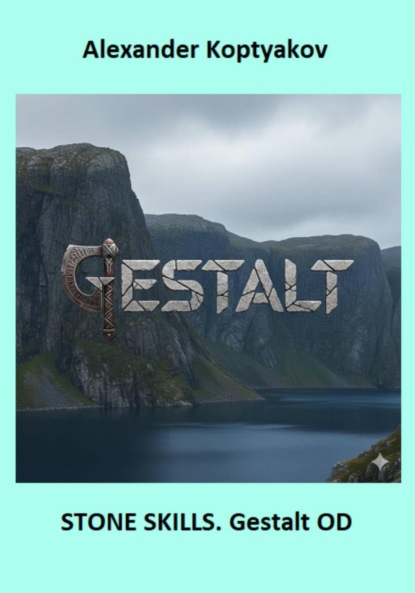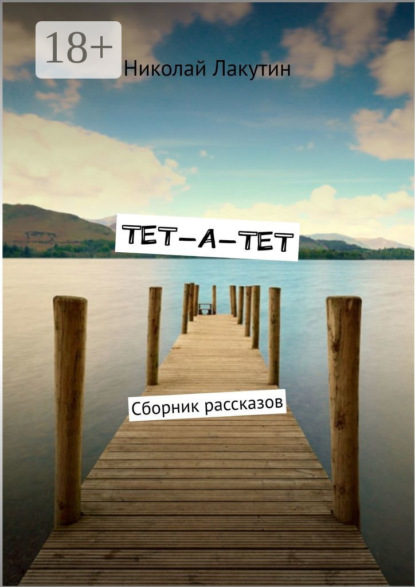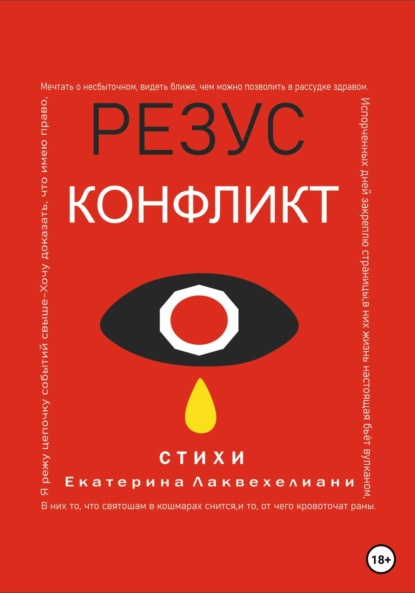Stone Skills. Gestalt OD

- -
- 100%
- +

2025 – "Stone Skills". The difference between process-based and expert consulting
Speech at VIII CONFERENCE on Organizational Development in the Gestalt Approach VEGI-INTAGIO-2025 "GROUPS. TEAMS. ORGANIZATIONS"
One can learn a lot from experts in their field. For instance, one could attend a cooking master class given by a chef at the city's best restaurant… But, unfortunately, everyone later returns to their own kitchens and continues to cook familiar dishes from familiar ingredients. Unlike this (expert) approach, a process consultant working with the Gestalt approach will come to your "kitchen" and help you become aware of how you cook your soup!

The monks from the "The Story of Stone Soup" fairy tale are, of course, process consultants! They arrive only with stones, and they leave with them.
In my presentation, I will talk about the theory and practice of using the organizational development seminar "Stone Soup". The seminar is based on the Cleveland Model.

A few slides about myself. My name is Alexander Koptyakov. I recently turned 45, and I am at something of a peak in my life.
For the first 12 years, I developed Hard Skills – I was a programmer. To use culinary language, I was cooking individually.
Then I mastered Soft Skills as a manager – you could say I was managing the kitchen.
After studying Gestalt at VEGI with Konstantin Pavlov, I began developing Salt Skills – that is, mastering a leadership position in my organization, minimizing managerial influence and managing experience.
And for the past few years, I have become a consultant and mentor not only in other departments (finance, logistics) but also outside the organization where I still work. Today, I have developed two seminars: one, "Letter from the Future," based on the Belfast Model, and the other, "Stone Soup", based on the Cleveland Model, with which I visit other people's "kitchens"! I have named these skills Stone Skills. At the end of the presentation, I will definitely explain why I chose this particular name.

So, to back up what I'm saying. Writer. You can find about nine of my books in Russian and English. They cover management, psychology, and philosophy. There is prose and poetry. The latest books include material on Gestalt and Organizational Development.

Engineer.
Hard skills – Soft skills – Salt skills – Stone skills
Specialist – Manager – Leader – Consultant
My career as a specialist began in 2002 with the development of a database for the startup Ultimate-Guitar. At the time, I was the only programmer there, and now it is the world's largest online archive of guitar tabs, chords, and lyrics, with a multi-million audience of musicians.
Next, I worked for 11 years as a software engineer in the Gas Industry. Today, incidentally, is the 60th anniversary of Oil and Gas Industry Workers' Day! I congratulate everyone involved on the holiday!
The following 11 years were spent at an international chemical company, where I was already mastering the roles of manager and leader.
Somewhere between these companies, or rather, parallel to working at them, I spent 5 years as the owner of a children's development club based on the Montessori method.
And finally, my current stage of development, as before – parallel to my main job – is practicing the role of a process consultant for organizational development using the Gestalt approach: this includes conducting strategic sessions, mentoring, and external consulting.

So, consulting practice as of now. Some figures:
– The workshop "Letter from the Future" has been conducted 29 times.
– The workshop "Stone Soup" has been conducted 8 times (the seminar was developed this year)
– 15 sessions were group sessions
– 22 sessions were individual sessions
– 151 people participated in group sessions
– 22 people participated in individual sessions (correspondingly)
– 33 sessions were online
– Only 4 were in-person
– 27 workshops were conducted in Russian
– 10 were conducted in English
– 22 seminars were conducted within the organization
– 15 were external consulting

I have developed a standard scheme for a year of mentoring:
– First meeting: To establish the mentoring relationship, plan regular meetings, and contracting.
– Second meeting: "Letter from the Future" workshop to set strategic goals and annual objectives.
– Third meeting: "Stone Soup" workshop to explore the mentee's "kitchen" and find ways to apply elements of the Cleveland Model to increase productivity and efficiency.
– Following this: Bi-weekly meetings in the Montessori format. The mentee chooses any topic from a prepared list of my expertise. I follow the mentee's choice, share theory, practice, and personal experience, and facilitate dialogue.

Now I invite you to attend a condensed version of the "Stone Soup" workshop. There will be a theory block, as well as exercises. You will try some of the exercises yourselves. Let's go!

The Cycle of Experience. Also known as the Cycle of Contact. An important quote from Edwin Nevis that will be useful to us later: "A method of establishing strong contact that permeates the countless boundaries of subsystems is necessary for the healthy functioning, survival, and growth of an organization."

Contact is always contact with reality. Moreover, contact is typically not singular, but repeated multiple times. Here are a few quotes from the great Russian physiologist, Prince from the Rurik dynasty, Alexey Ukhtomsky:
– The tragedy of man is that he has no portable, convenient, and handy 'criterion of truth,' other than the real test of his expectations in a direct confrontation with concrete reality. <…>
– An old dominant is renewed either in order to make do with old experience in the face of new data, or in order to reintegrate the old experience according to the new data. <…>
– However, in the process of creation, what is obtained is not an immediate, exact, and adequate snapshot of the objects of reality, but only a kind of trial approximation, which only in further practice, by means of repetitive adjustments, becomes an increasingly adequate reflection of the regularities of the environment. <…>
– Our knowledge of the chronotope is always a trial project of a forthcoming concrete reality based on preliminary signs. The truth or falsehood of the project is decided by concrete verification.

Kurt Lewin. We will look at Field Theory in connection with the Cycle of Experience. Here is his quote and famous formula: "In principle, it is generally agreed upon that behavior (B) is a function of the person (P) and their environment (E): B = F(P, E) – and that P and E in this formula are interdependent variables." (the person and the situation in which they find themselves).
We'll also touch upon the hodological space introduced by Kurt Lewin. On the left, you see a comparison of the spaces of free movement for a child (top) and an adult (bottom). Accessible regions of activity are unshaded, and inaccessible regions are shaded. In the same physical space, more regions are accessible to the adult, though some (like sucking a pacifier, children's travel fares, and so on) become inaccessible.
Looking at these same spaces, you could also imagine, for instance, a city through the eyes of a resident (top), whose regions of activity are connected to home, work, a few shops, and social institutions. And below, the same city, but through the eyes of a tourist, exploring the city using a guidebook.
Different psychological representations of life space lead to different behaviors.

Now let's do an exercise: Drawing-scheme
Take a blank sheet of paper horizontally and draw two areas: one on the far left edge and one on the far right edge. On the left, write "Kindergarten". If you didn't attend kindergarten, write "Infancy". On the right, write in your current situation: your job title, role in the company, or current life situation.
Done? Now, for those who remember the fairy tale "Easy Bread", imagine on the left a grain of wheat and on the right, bread on the table. The grain cannot instantly turn into bread; it needs to pass through intermediate situations, such as planting, ear of corn, sheaf, storage, flour, oven, and only then the bread on the table.

You now need to do the same thing: schematically draw the areas that you passed through on your life path from kindergarten to your current situation.
You have 5 minutes for this exercise, then break into pairs with your neighbor for another 5 minutes and show and talk about what you came up with. All in all – 10 minutes. You may begin.
…
Done? And now – a small additional task.

Draw at least two more areas to the right of your current situation. And fill them in. These will be a few alternative forecasts for your near future. Two minutes for this exercise, and we will continue. This is for you; you don't necessarily have to show it to anyone.

We are moving on to the Cycle of Experience. Although we are process consultants, we shouldn't forget that increasing the productivity and efficiency of the Client-System is linked to achieving a result. I've placed the result at the end of the contact.

The Cycle of Experience has a total of 7 stages. Let's represent them as 7 areas and color them in the colors of the rainbow, starting with the Red Contact.
Full Contact – Assimilation – Withdrawal – Sensation – Awareness – Energy mobilization – Action.
Contact is not a point on the curve; it's a segment on it. You can imagine contact as a melody, the result of which will only come when it has been fully played out.
This is perfectly described by Kurt Lewin's formula: Result = Result of the Behavior Program, which is a function of the System and the Situation.
After the Contact phase of the Cycle is complete, the Assimilation stage begins. Did we get the result? What is the quality of the result? What new information was learned about the Situation? What new information was learned about the System? Should the Contact be repeated? Or are the Contact and Result good enough to not repeat and to remember them?
Next in the Cycle is Withdrawal and the memorization of the acquired experience for the future.
And now we are back at the initial stage of the Cycle of Experience – Sensation. If at the Contact stage we have everything we need – an idea of the Result, a Behavior Program, an understanding of the Situation, and the System – then at the Sensation stage, the preparation of all necessary elements for Contact is just beginning.
At the Awareness stage, clarification occurs.
At the Energy mobilization stage, the Behavior Program is even prepared.
It would seem everything is ready – contact can begin! But no. I will share a real-life example. Once, I started to sense a lack of money. Being aware of the situation and understanding myself as a System that is not capable of stealing, I defined the desired result as a salary increase. Developing the behavior program, I prepared a list of my achievements over the past year and decided to approach my manager with a request for a raise. So, at that moment, I had everything: an understanding of the situation, my capabilities, the desired result, and a program to achieve the result. And what did I do? Exactly – I started waiting for the right moment when the boss would be in a good mood!

Usually, at the seminar, we do a few exercises in subgroups at this point.
– Exercise №2 (example): Assign a rating of importance (1-10) to each stage of the Cycle of Experience to achieve an effective result
– Exercise №3 (example): Take a topic of your choice from the list (or your own topic) and discuss what is happening in the System regarding this at each stage of the Cycle.

Next is an exercise to continue exploring how processes occur in the Client-System's "kitchen." Remember the quote from Edwin Nevis: "A method of establishing strong contact that permeates the countless boundaries of subsystems is necessary for the healthy functioning, survival, and growth of an organization." So, I propose a brainstorming session for the subgroups – to list all the processes, distributing them across three areas: Functioning, Survival, and Growth.

After the areas are filled with factual information, an additional exercise is suggested: to redistribute the listed processes within their own area, treating the area as a range.
– Frequent – Rare
– Acceptable Risks – Major Consequences
– Short Projects – Long Projects
It is important to note not only that different processes have cycles of different durations and forms, but also the crucial fact that all of them are happening in the Client-System simultaneously! Even if they are at different stages at any given moment.

If expert support is needed, I recommend the following directions for further development:
– Service Management for Functioning
– Risk Management for Survival
– Project Management for Growth

Let's do one more small exercise together. Take a sheet of paper, perhaps the same one. And write your full name (First Name and Surname) on it. Right now.
Done? Now, raise your right hand, those of you who wrote with your right hand. Lower it. Now, raise your left hand, those of you who wrote with your left hand. Please lower it.
Now write the same thing again, only with the other hand.
Done? And the final third task. Write the same thing, but with both hands simultaneously. Try not to do it with one hand while the second one is just formally present. Both hands need to be equally involved in the writing.

We have now arrived at the Myers-Briggs Typology, which was created based on Jung's typology.
The Myers-Briggs Type Indicator (MBTI) is designed to determine one of 16 personality types. It includes 8 scales, grouped in pairs.
I propose viewing each scale as a scale: Left-Handed vs. Right-Handed. This is not about good or bad; it is about which hand typically acts first, automatically, and with better quality.

Now let's return to the Cycle of Experience and see how it might be connected to the MBTI typology. This is a working hypothesis.
The Scale of Orientation of Consciousness:
– E (Extraversion) – orientation of consciousness outward, toward objects
– I (Introversion) – orientation of consciousness inward, toward the subject
Where is attention during contact – on the Situation or on the System? I have placed this same scale for Action: some people initiate contact when they are ready, others when the situation is ripe. The same applies to the Assimilation stage: after contact, some try to answer the question, "Who is to blame?" while others ask, "What is to be done?"
The Scale of Way of Orientation in a Situation:
– S (Sensing) – orientation toward material information
– N (iNtuition) – orientation toward intuitive information
The Scale of Basis for Decision Making:
– T (Thinking) – logical weighing of alternatives
– F (Feeling) – making decisions based on emotional ethics
The Scale of Way of Preparing Decisions:
– J (Judging) – rational preference for planning and pre-ordering information
– P (Perception) – irrational preference for acting without detailed prior preparation, orienting more by circumstances

If you have taken this test, you have a 4-letter code, and you can easily see your orientations according to the Cycle of Experience.

But, of course, it's much more interesting to look when there is a pair, a group, or a team. On the one hand, if people have different preferences at the same stage of the Cycle of Experience, this can be a source of conflict. On the other hand, if everyone ends up on one side of the scale, in that case, there will likely be mutual understanding, but as a whole, as a team – there will be an exposed vulnerability on the opposite side of the spectrum. Because situations vary, and if one team member is uncomfortable at a certain stage, a team with internal diversity can present a more suitable candidate outwardly and be more effective as a whole.
Конец ознакомительного фрагмента.
Текст предоставлен ООО «Литрес».
Прочитайте эту книгу целиком, купив полную легальную версию на Литрес.
Безопасно оплатить книгу можно банковской картой Visa, MasterCard, Maestro, со счета мобильного телефона, с платежного терминала, в салоне МТС или Связной, через PayPal, WebMoney, Яндекс.Деньги, QIWI Кошелек, бонусными картами или другим удобным Вам способом.





